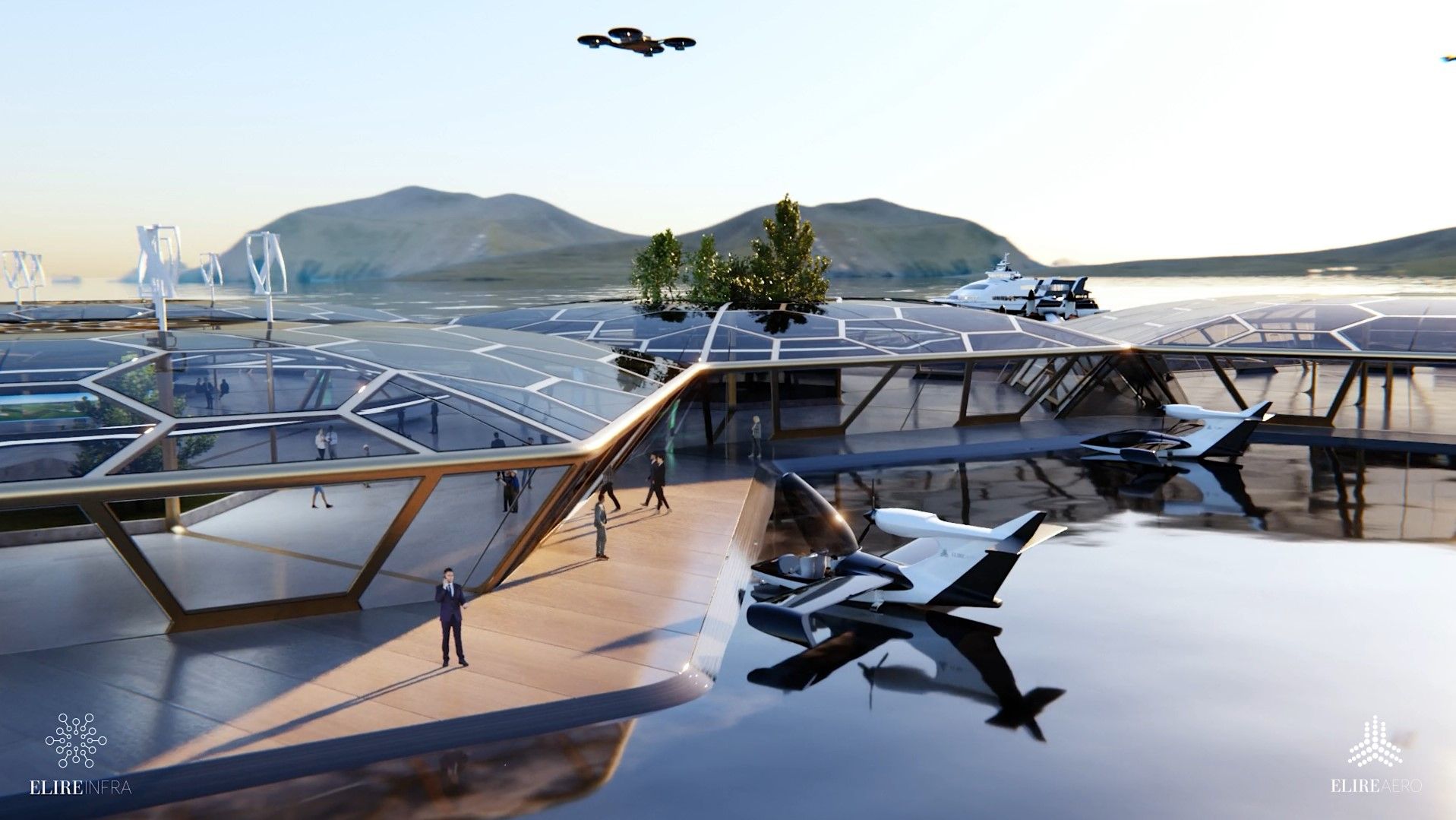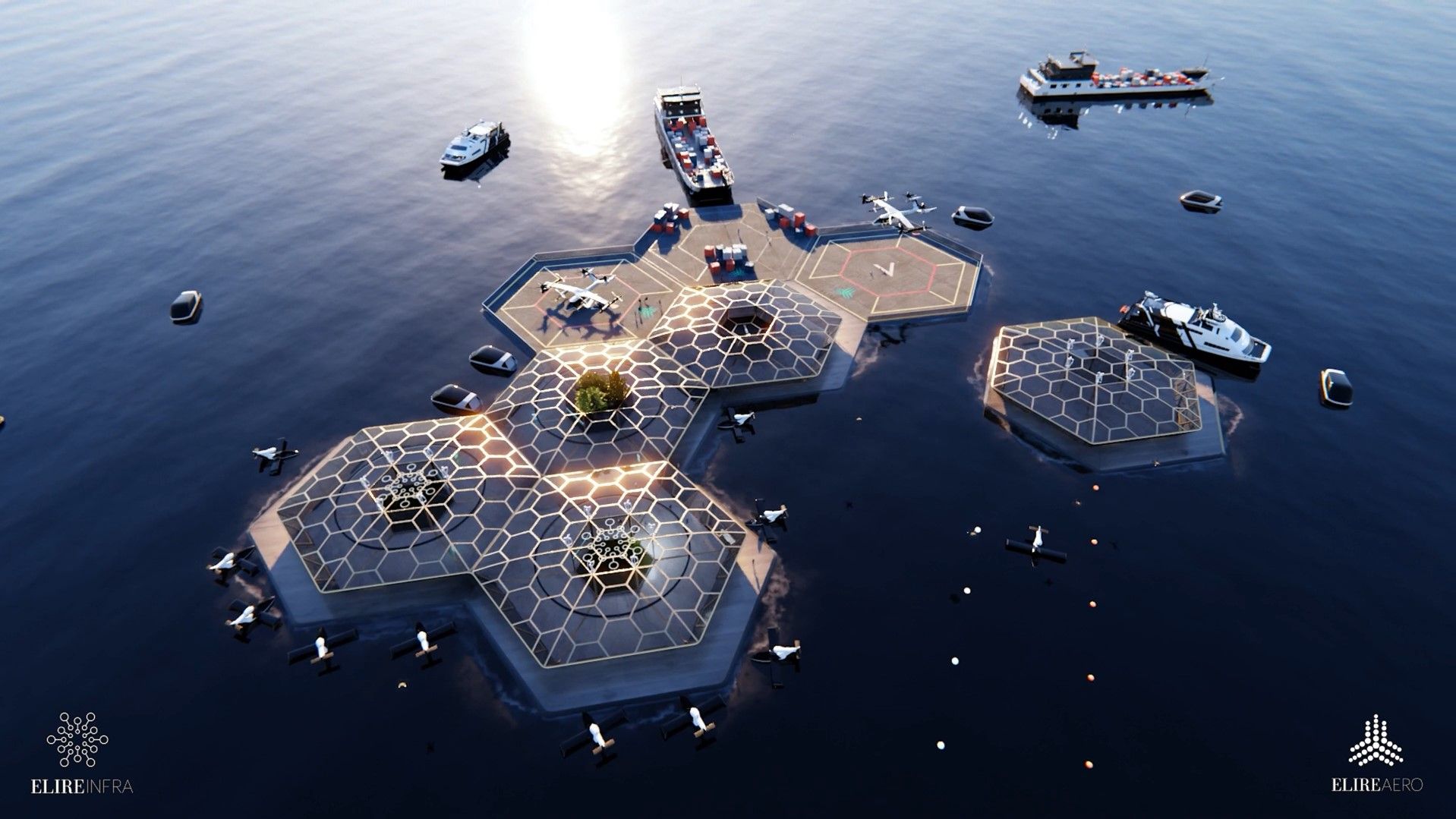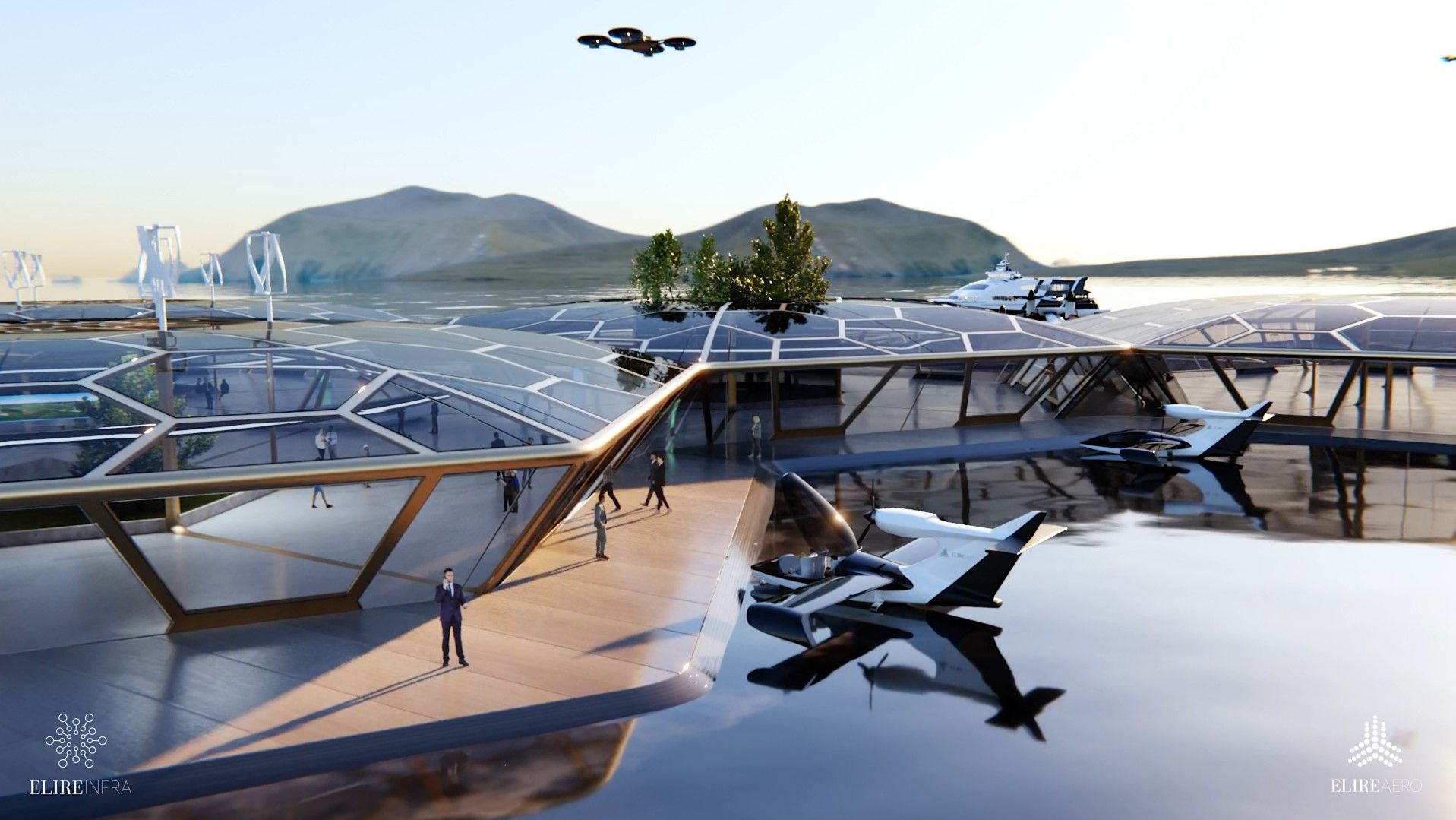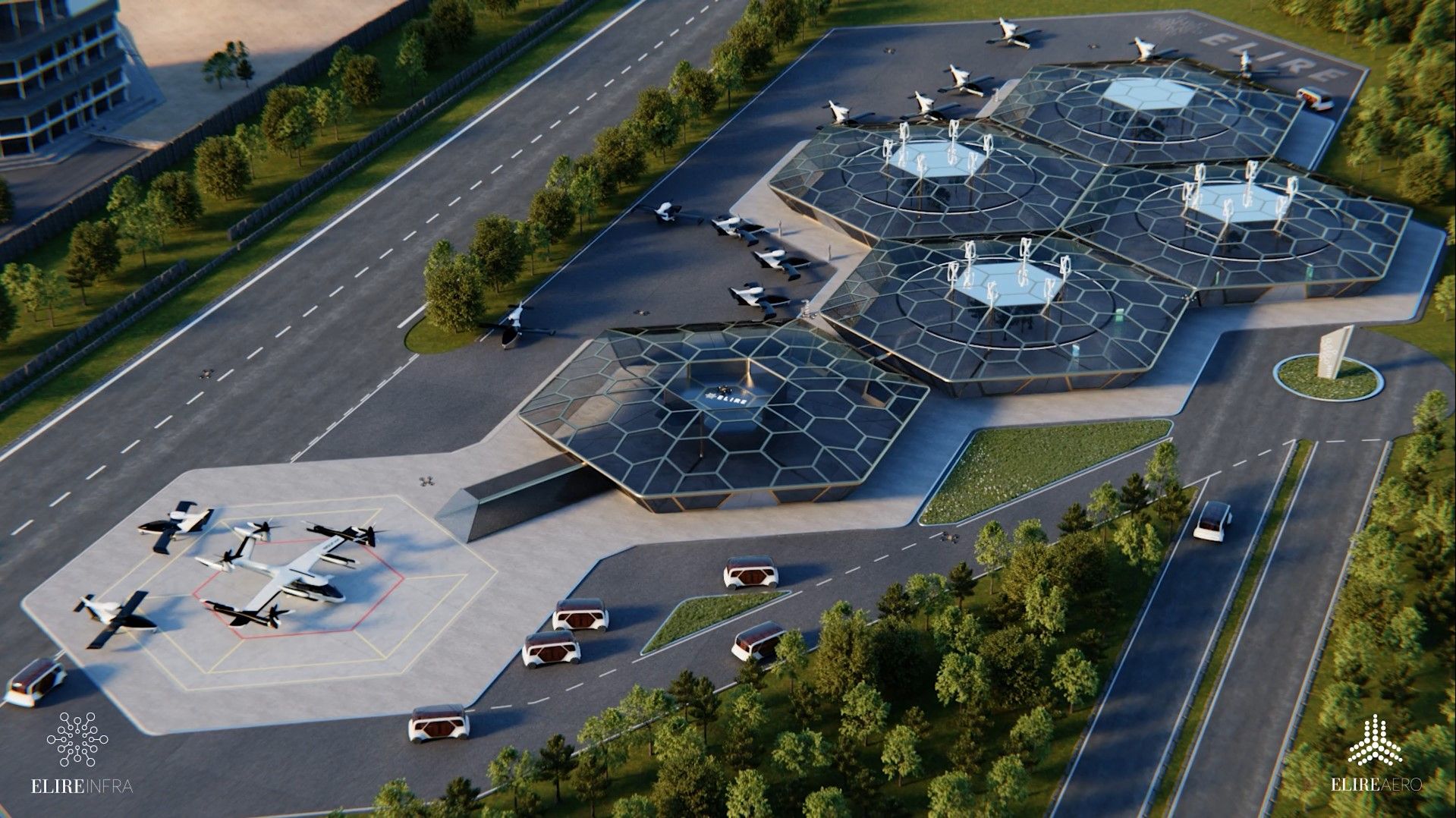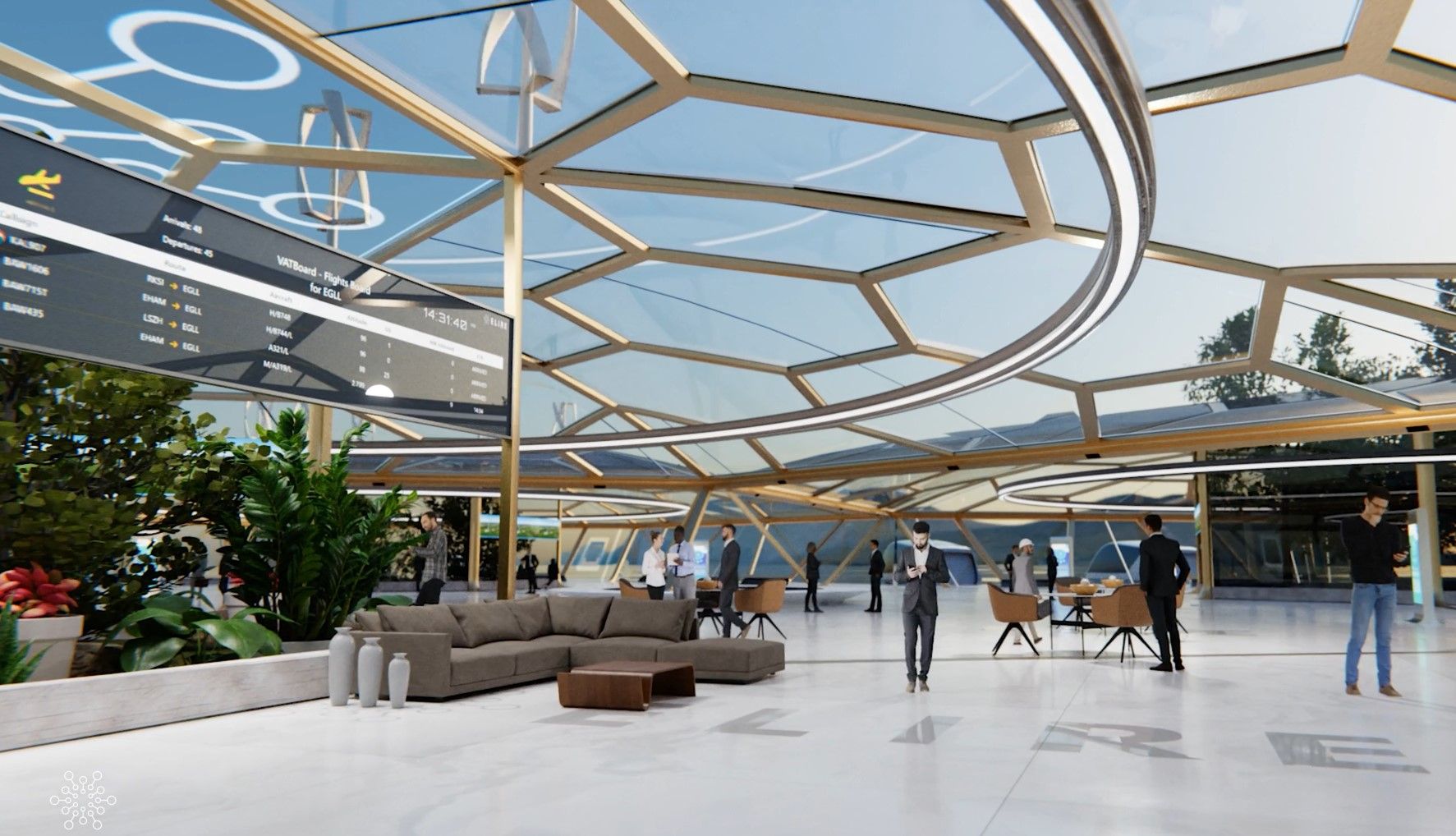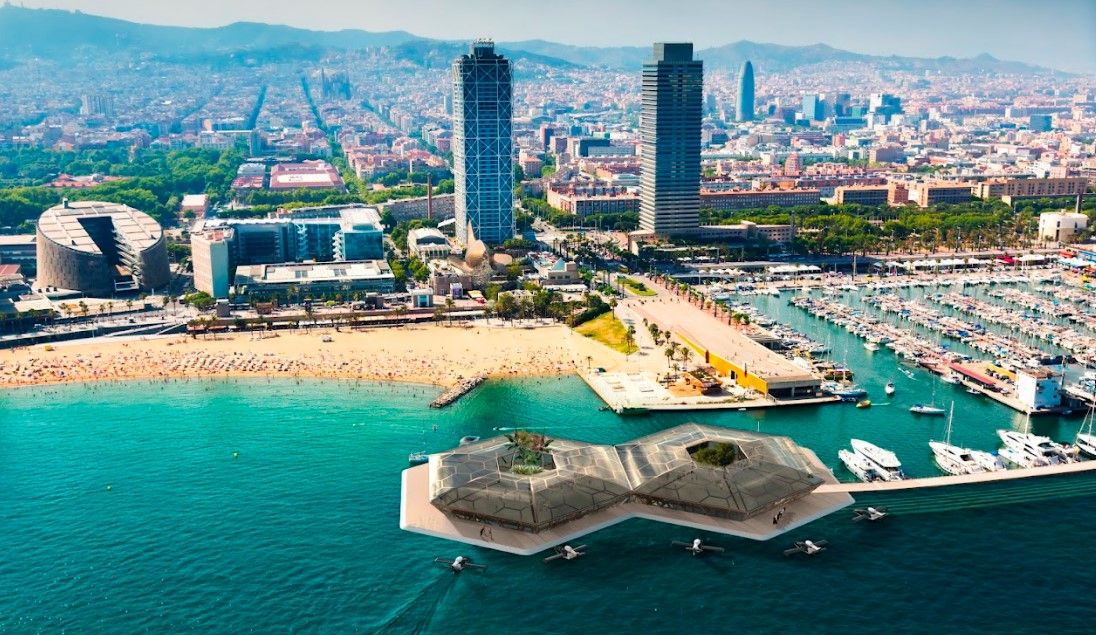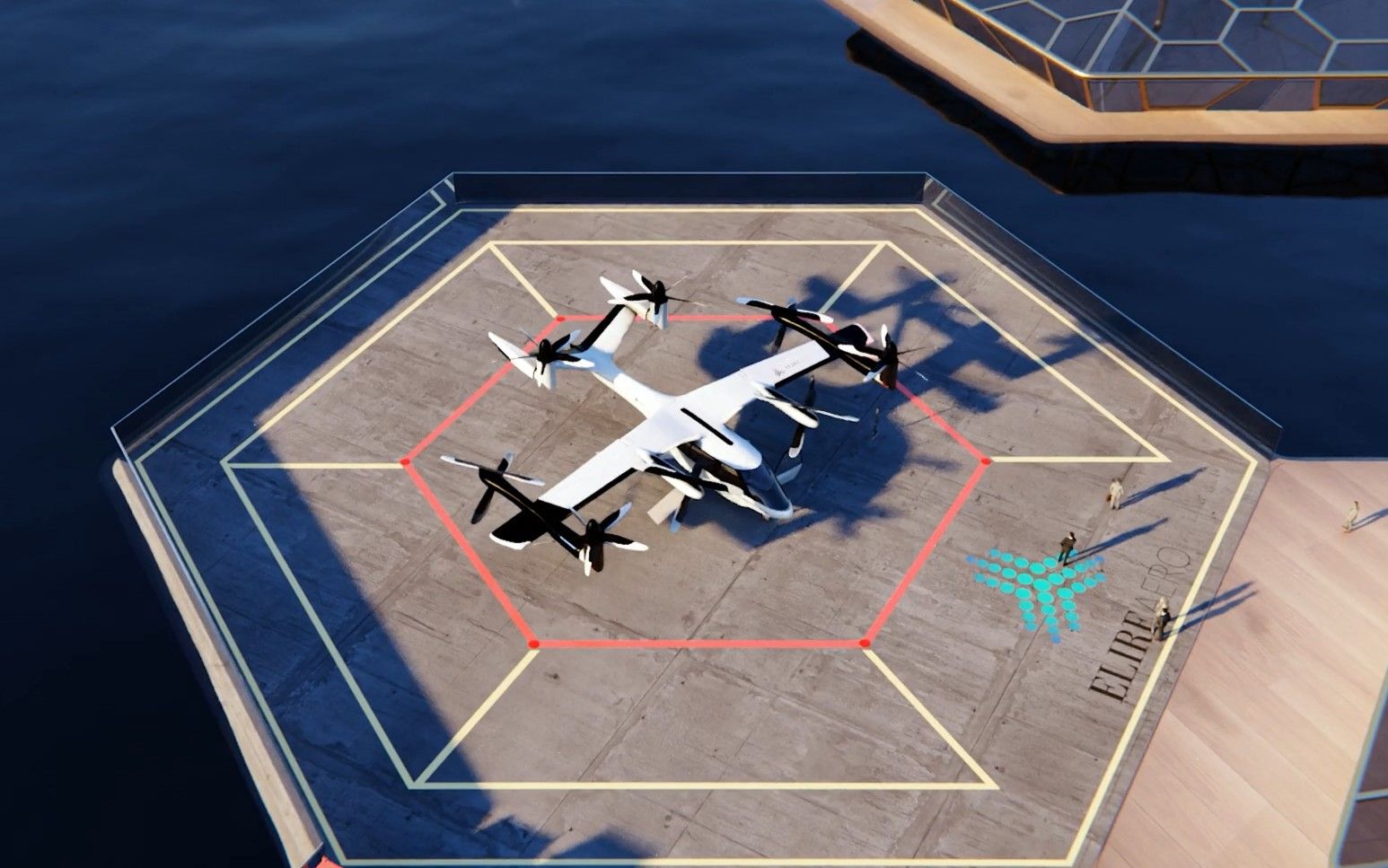The worldwide Advanced Air Mobility (AAM) market is expected to reach $16.8 billion by 2025 and $110 billion by 2035. The electric vertical takeoff and landing (eVTOL) vehicle sector has exploded with new hopeful manufacturers over the past decade, along with contributions from more established OEMs. About 500 different variations of urban air mobility (UAM) vehicles are currently under development across the globe.
Some have already launched accompanying infrastructure projects and partnerships, looking to establish networks of vertiports that will transport commuters and goods on short routes with zero emissions. However, startup Elire wants to take the concept further, creating an ecosystem of a new form of multimodal advanced air mobility port.
Elire Infra's Blue and Green hubs
There are two parts to the project - the infrastructure aspect, with a mission to create an entire infrastructure for zero-emission electric air transportation floating on the water and built alongside seaports and harbors. This falls under the task of Elire Infra, and it has a pretty grand vision - to create the next transport ecosystem with 2000+ mobility hubs by 2040. Elire Infra says it is looking to "connect communities and changing sea, air, and land travel, while decarbonizing, decongesting and contributing to meet global ESG targets."
Moving such facilities offshore with what Elire calls Blue Hubs would also eliminate the dangers of climate impact on new infrastructure in locations vulnerable to the rise of sea levels. They would also allow for the electrification of passenger sea vessels, and, as they are only anchored down, they can be moved according to demand and necessity. The design of the hubs and superstructure, Elire says, will "celebrate the ocean," while integrating current smart building technology and allowing for future technology integration.
However, there are also solutions for scaleable and interoperable on-land modal construction. Both the offshore and on-land hubs can be turned into clusters with several hexagonally shaped units spread out to serve different purposes, for instance as passenger terminals or energy storage spaces.
Hydrogen fuel-cell technology will power the site with renewable energy, and the solution for storing the hydrogen will also be implemented into a refueling system for vehicles, aircraft and vessels. The solutions currently under development are designed to function entirely off-grid.
Retrofitting eCTOL before launching amphibious eVTOL
Meanwhile, the company's other branch, Elire Aero, wants to have a certified air taxi aircraft ready for distribution by 2024. Nevertheless, it differs from other UAM startups in that it is not currently building an eVTOL, but instead looking to retrofit conventional takeoff and landing vehicles (CTOL) and short takeoff and landing vehicles (STOL) with electric propulsion systems.
However, the company is also aiming to build amphibious eVTOL for the future, which it says will be ready sometime after 2030. So why not an eVTOL right away? Elire's developers are somewhat more cautious about the timeline than other more optimistic electric vertical flight enthusiasts.
Speaking to Simple Flying, Elire's General Manager, Luke Jenkinson, said,
"ELIRE Aero has a realistic approach to AAM over the next 10-15 years, where the transition and gap is defined not by new clean sheet conceptual aircraft that will take this time to develop and certify, more so transition in a realistic sense of the industries capabilities including cleaner fuel options, replacement of high carbon emission missions with advanced drone technology (faster and more efficient), as well as retrofitting and convert existing aircraft (eCTOL & eSTOL)"
Elire is looking to certify a retrofitted electric conventional takeoff and landing (eCTOL) vehicle from an as-of-yet undisclosed airframe manufacturer as early as late next year. The first unit is scheduled to roll out from the production line towards the end of 2024.
As far as we are aware, the only other amphibious eVTOL projects currently out there are US Air Force-backed Reno-based Valkyrie System Aerospace HoverJet Guardian concept, and a variant of the Wave aircraft from New Zealand's Wickers.
What do you think of Elire's concept for the mobility hub of the future? Leave a comment below and share your observations.
Get the latest aviation news straight to your inbox: Sign up for our newsletters today.

